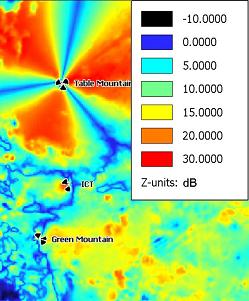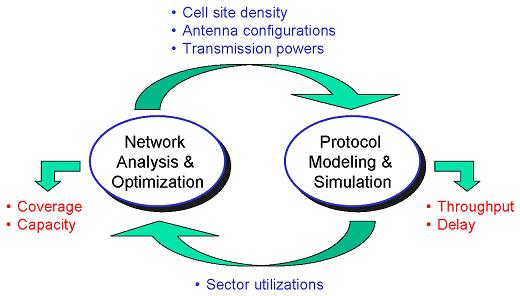Public Safety Broadband NetworkObjectiveTo develop communications and network models for public safety broadband networks, and to analyze and optimize the performance of these networks. BackgroundThe FCC and the Administration have called for the deployment of a nationwide, interoperable public safety mobile broadband network. Public safety has been allocated broadband spectrum in the 700 MHz band for such a network. The National Public-Safety Telecommunications Council and the FCC have endorsed the 3GPP Long Term Evolution (LTE) standard as the technology of choice for this network. Network Analysis and Optimization
Network analyses can be used to predict wide area performance metrics over a defined geographic area, such as the uplink and downlink:
Protocol Modeling and SimulationEMNTG also develops and customizes protocol-level models of wireless technologies such as LTE. These models can be used to perform more detailed simulations of an incident area communication scenario. They include models of the application traffic (e.g., push-to-talk voice, video streams, file transfers), lower layer communication protocols, and the RF channel environment. Performance metrics generated by these models include
Channel MeasurementsThe fidelity of the predictions generated by the network and protocol models is dependent in large part on the accuracy of the underlying RF channel propagation model. In collaboration with its partners in NIST/PML, EMNTG collects and analyzes channel measurements that are used to develop and tune RF propagation models. Of particular relevance to the Public Safety Broadband Network, these efforts include measurements in the 700 MHz public safety band. |
Related Programs and Projects:Major Accomplishments:
Contact
Advanced Network Technologies Division 100 Bureau Drive, M/S 8920 301-975-4190 Telephone |

 The Emerging & Mobile Network Technologies Group (EMNTG) performs RF network analysis and optimization of public safety broadband networks using commercially available and in-house customized network modeling and simulation tools. Current efforts are focused on wide area networks based on LTE technology.
The Emerging & Mobile Network Technologies Group (EMNTG) performs RF network analysis and optimization of public safety broadband networks using commercially available and in-house customized network modeling and simulation tools. Current efforts are focused on wide area networks based on LTE technology.